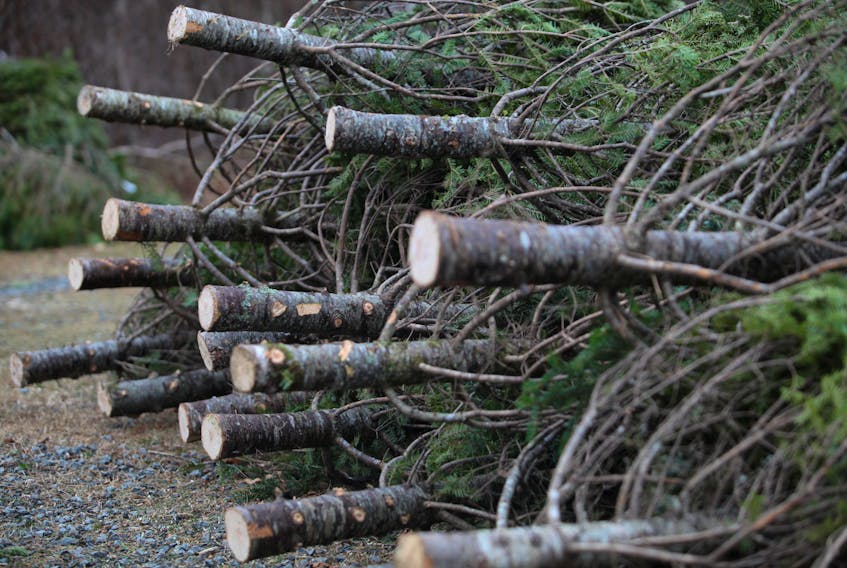Like many Nova Scotians, we’ve put our Christmas tree up earlier than usual this year. Rumours about tree shortages combined with the urge to decorate and brighten up indoor spaces have meant an early December rush at local Christmas tree lots.
Globally, there are many species of trees used as Christmas trees, but in Nova Scotia our native balsam fir is predominant. In fact, it’s so popular that 25 years ago Lunenburg county was recognized as the balsam fir Christmas tree capital of the world.
There are many advantages to balsam fir. The trees have a natural conical shape that is enhanced by regular pruning, they hold their needles better than other species, they produce dense growth and strong branches for holding ornaments, and their foliage is strongly fragrant.
Many Christmas tree lots also offer pine trees like white pine, red pine, or scotch pine. White pine has soft bundles of needles and little to no fragrance. Pine trees also hold their needles well, reducing post-Christmas clean up.

Potted trees are another option, although they are more difficult to find. An indoor plant like a Norfolk Island pine makes a fine living Christmas tree and one that can thrive in your home for many years. This sub-tropical conifer is sold year-round in nurseries and florist shops, and is available in a range of sizes from small tabletop plants to specimens five or six feet tall.
If you’re picking out your Christmas tree this weekend, start by measuring your space, taking into account the height of your tree topper as well as the stand you will be using. It’s also a good idea to bring the tape measure to the tree lot.
When you get to the lot, look for a tree that’s fresh and not already losing needles.
Check trees by giving the branches a pull test. Place your thumb and forefinger a foot or so along a branch and gently run them down to the tip of the shoot. If a bunch of needles come off in your hand, pass on that tree.
Once you get the tree home, make a fresh cut at the bottom of the trunk. You don’t need to remove much, even a centimetre is enough to ensure good water uptake. You can also ask the tree lot make the cut for you. Put the tree in a bucket of water as soon as you arrive home or as soon as you make the bottom cut. If you’re not going to bring it indoors for a few days, leave the tree in a cool, shaded space like a garage or porch in the bucket of water.
Consistent watering is the key to a long-lasting tree. A tree can take up several litres of water each day and if it’s allowed to dry out, a sap seal may form at the bottom of the trunk reducing its ability to re-hydrate. Don’t add anything to the water. Common suggestions include aspirin, bleach, sugar, or 7 Up. These will not help the tree last longer or reduce needle drop. Plain water is perfect.
Once the holidays are over, recycle your tree in the garden by using the boughs as mulch over tender perennials or root vegetables. If you have a chipper, you can also turn the trunk into wood chips for mulching.
Niki Jabbour is the best-selling author of three gardening books, and a two-time winner of the prestigious American Horticultural Society Book Award. Her latest book, Growing Under Cover is out December 2020.









